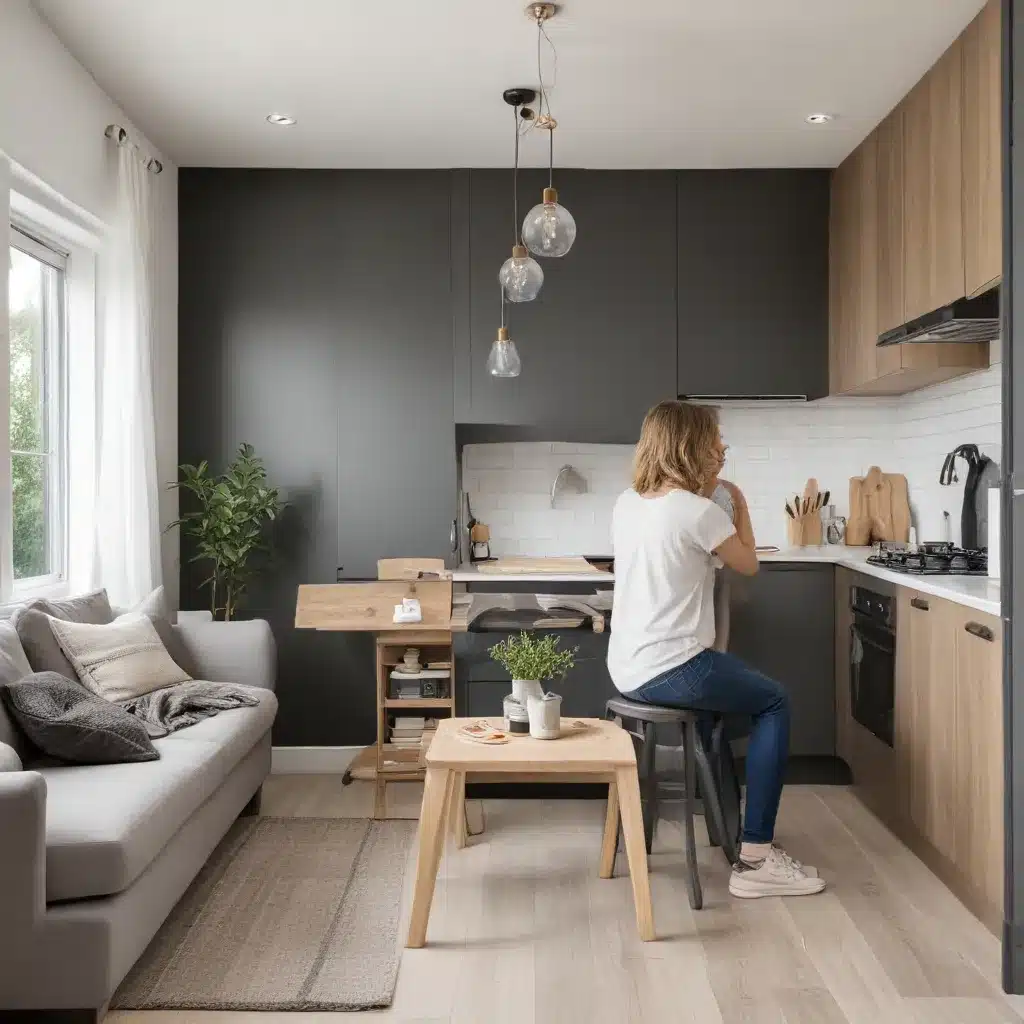
Multifunctional Makeovers: Renovating for Flexible Family Living
The age-old adage “necessity is the mother of invention” has never been more applicable than in today’s housing landscape. As families grapple with limited square footage, evolving needs, and tight budgets, the demand for multifunctional spaces that adapt to changing lifestyles has skyrocketed. Whether you’re a new parent cramming a nursery, home office, and play area into a single room or an empty nester reimagining your spare bedrooms, the key to creating a harmonious, future-proof home lies in clever, versatile design.
Flexible Design Strategies
Adaptable Spaces
The most successful multifunctional makeovers start with a foundation of flexible, open-ended spaces. Rather than rigidly defining each room’s purpose, opt for layouts that allow for fluid transitions between work, rest, and recreation. Consider transformable furniture like murphy beds, nesting tables, and modular seating that can be rearranged on the fly. Incorporating elements like sliding doors, retractable walls, and zoned lighting empowers you to seamlessly shift between private and communal zones as needed.
Open-Concept Layouts
By minimizing structural barriers and embracing open-concept floor plans, you can cultivate a sense of spaciousness even in compact homes. Strategic placement of focal points like fireplaces, aquariums, or feature walls can subtly delineate distinct areas without fully compartmentalizing the space. Leveraging sightlines and visual cues allows you to visually expand the perceived square footage, creating an organic, free-flowing environment.
Modular Furnishings
When outfitting a multifunctional room, modular furnishings reign supreme. Invest in pieces like sectional sofas, nesting ottomans, and height-adjustable desks that can be easily rearranged, stacked, or repurposed. Opt for furniture with hidden storage or dual functions – a daybed that transforms into a guest bed, a coffee table with concealed charging hubs, or a bookshelf that moonlights as a room divider. This adaptable approach ensures your spaces can seamlessly evolve alongside your changing needs.
Multifunctional Zones
Family Activity Areas
Gone are the days of the formal living room – today’s families crave flexible, inclusive spaces that can accommodate a range of activities. Carve out a cozy, family-friendly nook complete with plush pillows, baskets of toys, and a large, durable rug for impromptu game nights or movie marathons. Strategically position built-in benches, window seats, or sectional sofas to foster togetherness while maximizing seating.
Homework and Hobby Hubs
With remote work and distance learning now the norm, cleverly integrated study and hobby spaces are essential. Repurpose a spare bedroom, closet, or unused nook as a dedicated homework or craft zone, ensuring ample task lighting, storage, and surface area. Tuck a compact standing desk or floating shelves into an unused corner, or install a murphy bed that can double as a work surface when folded up.
Multipurpose Rooms
For households with limited square footage, the classic guest room or home office may no longer be a viable option. Instead, transform these spaces into truly multipurpose sanctuaries. A bedroom-slash-gym might feature a convertible sofa, resistance bands, and a foldable treadmill, while a combined nursery-office could incorporate a rolling desk, built-in bookshelves, and a cozy glider for nursing.
Sustainability and Energy Efficiency
Eco-Friendly Materials
As homeowners increasingly prioritize sustainability, incorporating green building materials is crucial for multifunctional renovations. Opt for low-VOC paints, reclaimed wood furniture, and bamboo or cork flooring – all of which offer aesthetic appeal and environmental benefits. Selecting durable, long-lasting finishes can also minimize the need for future replacements, reducing your carbon footprint over time.
Smart Home Technology
Cutting-edge smart home devices can simplify the management of your multifunctional spaces. Programmable thermostats, motion-activated lighting, and voice-controlled appliances allow you to optimize energy usage and streamline daily tasks, all from the palm of your hand. Integrating these technologies can enhance both the functionality and energy efficiency of your home.
Energy-Saving Features
Beyond materials and gadgets, intentional design choices can dramatically improve a space’s thermal performance. Strategically placed windows and skylights can maximize natural light and ventilation, reducing the need for artificial climate control. Insulation, weatherstripping, and high-efficiency HVAC systems further bolster your home’s energy efficiency, keeping utility bills low and your carbon footprint manageable.
Personalized Storage Solutions
Custom Cabinetry
Crafting bespoke cabinetry is a surefire way to optimize storage in multifunctional spaces. Seamlessly integrate built-in shelving, drawers, and cupboards to conceal clutter and create a harmonious, uncluttered aesthetic. Tailor the dimensions, finishes, and organizational features to your specific needs, whether that means accommodating bulky sports equipment or dedicating compartments for craft supplies.
Organizational Systems
Pairing your custom storage with thoughtful organizational systems is key to maintaining a tidy, functional home. Invest in pull-out pantry shelves, rotating spice racks, and adjustable closet organizers to ensure every item has a designated place. Clever solutions like pegboards, magnetic bars, and wall-mounted baskets can also transform underutilized vertical space into user-friendly, accessible storage.
Decluttering Techniques
Of course, no storage system can succeed without first addressing the root of clutter. Embrace a minimalist mindset by regularly decluttering and paring down your possessions. Employ strategies like the KonMari method, capsule wardrobes, and digital filing to streamline your belongings and create a tranquil, unencumbered living environment.
Whether you’re renovating a cozy city apartment or reimagining a sprawling suburban home, multifunctional design offers a wealth of opportunities to optimize your space, enhance your lifestyle, and future-proof your investment. By embracing flexible layouts, sustainable materials, and personalized storage solutions, you can craft a home that evolves seamlessly alongside your family’s changing needs. For more inspiration and expert guidance, be sure to explore the wealth of resources available at Reluctant Renovator.



